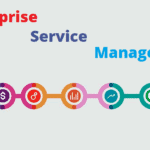
by Scarlett Bayes, Industry Analyst, SDI
If ‘Shared Services’ is something you’re hearing mentioned more and more but you’re not totally sure what it’s all about, this quick overview is for you.
Shared Services: What is it?
- Shared Service Management is the over arching term for the practice of merging or sharing elements of back office functions (i.e. IT, HR, Facilities, Finance), whether its processes, tools, best practice, or a physical service desk team
- You can do one of these or all of them and still be practicing some form of Shared Service Management, and you don’t have to do every aspect at the same time; you can expand what you share overtime – it’s a journey not a race
- Also read: Enterprise Service Management (ESM) or Shared Service Management (SSM)
What are the reasons behind it?
- Support teams across the organisation will typically carry out very similar tasks in terms of processing tickets and fulfilling service requests
- Often, support teams will need to communicate to fulfil requests, e.g. when requesting a new laptop, the fulfilment will involve IT, Facilities, and Finance
What are the benefits?
- Improved efficiency across service and support teams
- Faster resolution of tickets
- Fewer misplaced calls
- Better customer experience
- Cost savings
- Better visibility of other business functions
- Improved cross-company communication and collaboration
What do I need to do (as a service desk professional) to get started with Shared Service Management?
- Engage and discuss your ideas with other service managers and relevant stakeholders
- Review resources and infrastructure to assess capacity and capability
- Review and refine processes if necessary
- Have a service management tool with Shared Service Management capabilities
- Build on established connections between support teams for some quick wins
What problems could I run in to?
- Different ways of working and culture between support teams creating barriers
- Can be overcome overtime with effective communication and good leadership
- Office Politics causing sour relations
- Can be overcome by changing the mindset from an “IT takeover” to a collaborative project where you can learn from each support team
- The “technical” language different teams use can be different
- Create a “business language” which support teams use rather than strictly abiding to industry language
- Fear or resistant to change from staff
- Can be overcome overtime with effective communication and good leadership
- Resistance from customers
- Can be overcome overtime with effective communication of the benefits and providing support during transition periods
- Can be overcome overtime with effective communication of the benefits and providing support during transition periods
Are there any service desk case studies on Shared Service Management?
Yes! Here are a couple of success stories from our customers that might help you:

























